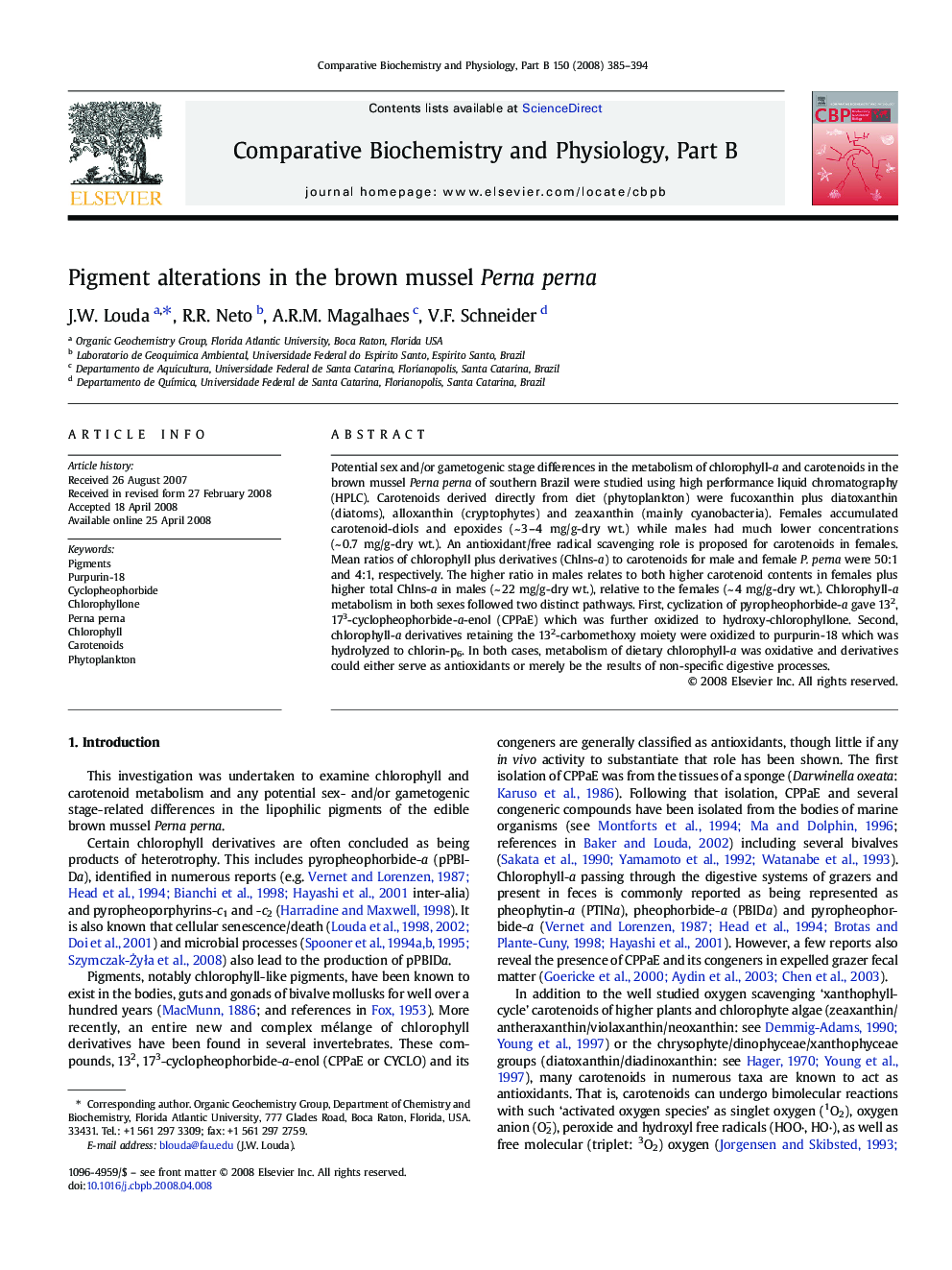| Article ID | Journal | Published Year | Pages | File Type |
|---|---|---|---|---|
| 1975871 | Comparative Biochemistry and Physiology Part B: Biochemistry and Molecular Biology | 2008 | 10 Pages |
Potential sex and/or gametogenic stage differences in the metabolism of chlorophyll-a and carotenoids in the brown mussel Perna perna of southern Brazil were studied using high performance liquid chromatography (HPLC). Carotenoids derived directly from diet (phytoplankton) were fucoxanthin plus diatoxanthin (diatoms), alloxanthin (cryptophytes) and zeaxanthin (mainly cyanobacteria). Females accumulated carotenoid-diols and epoxides (~ 3–4 mg/g-dry wt.) while males had much lower concentrations (~ 0.7 mg/g-dry wt.). An antioxidant/free radical scavenging role is proposed for carotenoids in females. Mean ratios of chlorophyll plus derivatives (Chlns-a) to carotenoids for male and female P. perna were 50:1 and 4:1, respectively. The higher ratio in males relates to both higher carotenoid contents in females plus higher total Chlns-a in males (~ 22 mg/g-dry wt.), relative to the females (~ 4 mg/g-dry wt.). Chlorophyll-a metabolism in both sexes followed two distinct pathways. First, cyclization of pyropheophorbide-a gave 132, 173-cyclopheophorbide-a-enol (CPPaE) which was further oxidized to hydroxy-chlorophyllone. Second, chlorophyll-a derivatives retaining the 132-carbomethoxy moiety were oxidized to purpurin-18 which was hydrolyzed to chlorin-p6. In both cases, metabolism of dietary chlorophyll-a was oxidative and derivatives could either serve as antioxidants or merely be the results of non-specific digestive processes.
